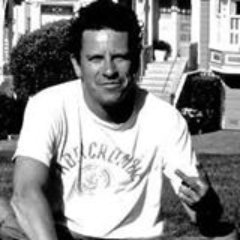Though hardly unused to such things, even for a band virtually defined by constant flux – breakups and defections, an eternal revolving door of personnel – the transition from the relatively stable zenith of Warrior On The Edge Of Time into the urbane and eccentric concerns of the Robert Calvert era was particularly pronounced. As Lemmy, Stacia and Nik Turner ejected from the mothership, Bob Calvert’s move from side-stage poet to centre-stage frontman propelled the band into territories uncharted before or since.
As sharp a left turn as was likely imaginable to your average Ladbroke Grove spacenik, 1976’s Astounding Sounds, Amazing Music (a visual and titular nod to the Amazing Stories sci-fi magazines of the 1930s onwards) jettisoned much of the band’s space drone and elongated meanderings into a far more pithy, chromium-edged proposition. Calvert’s cultural references, a blend of the lowbrow (Reefer Madness, the aforementioned title) and the highbrow (Steppenwolf, Hermann Hesse’s meditation on spiritual crisis and psychoanalysis) added a strong literary dimension only flirted with previously.
Musically, any soft corners were cleanly lopped off, and a concision to the arrangements plus a boldness with instrumentation – a piano on the chorus of Reefer Madness, heaven forfend – steered the band into new-wave and near-pop waters.
This trajectory continued and was further honed on the following year’s celebration of quantum particles: Quark, Strangeness And Charm, an accurate enough description of the contents. The propulsive Teutonic two-step of Spirit Of The Age provides the missing link between Warrior’s Opa Loka and PXR5’s Uncle Sam’s On Mars, itself much indebted to the beat rhythms of Gil Scott-Heron’s Whitey On The Moon.
Renamed Hawklords for 1978’s 25 Years On (line-up shuffles, legalities, the usual), the addition of humour (Flying Doctor) is perhaps the only misstep on a markedly contemporary collection reflecting the mainstream of the day. It also boasts the most un-Hawkwind-like album cover of their career.
Though recorded just prior to 25 Years On, the final release of the quartet, 1979’s PXR5 is arguably the strongest of the four. Calvert’s bookish dystopian fixations – Isaac Asimov (Robot), JG Ballard (High Rise) – resurface, along with a gradual reintroduction of the bubbling, oscillating synths that would remain the band’s trademark, bridging the 70s to the 80s and signalling the end of a remarkable period.

